Hygrophila R. Br.
hygrophila, water wisteria, Indian plant, blue stricta, hygro
Acanthaceae
Alternanthera, Ammannia, Gymnocoronis, Ludwigia, Mentha, Mimulus, Nelsonia, Ruellia, Shinnersia, Staurogyne
Asia, South America, Africa
Hygrophila angustifolia R. Br. [synonym of H. ringens var. ringens]
H. balsamica (L.) Raf.
H. corymbosa (Blume) Lindau
H. costata Nees [also offered under the synonyms H. guianensis Nees and H. lacutris (Cham. & Schltdl.) Nees]
H. difformis (L.) Blume
H. lancea (Thunb.) Miq. [synonym of H. ringens var. ringens]
H. odora (Nees) T.Anderson
H. pinnatifida (Dalzell) Screem.
H. polysperma (Roxburgh) T.Anderson
U.S. Federal Noxious Weed: Hygrophila polysperma
Identification: The submersedsubmersed:
see submergedform of Hygrophila polysperma can be distinguished by its short to medium, typically light green leaves with round apices. (Variegated cultivars exist.) The emersedemersed:
see emergentform is more difficult to identify, but has small sessilesessile:
(adj) attached directly, without a stalkflowers, small emersedemersed:
see emergentleaves, and a capsule bearing numerous seeds.
H. salicifolia (Vahl) Nees [synonym of H. ringens var. ringens]
H. stricta (Vahl) Lindau
Hygrophila corymbosa is introduced into the United States.
H. costata is introduced into Australia.
H. difformis is introduced into the United States and northern Australia.
H. polysperma is introduced into Australia, Mexico and southeastern United States; recently reported in Europe.
Hygrophila costata and H. polysperma are significant weeds in several countries; H. polysperma is an aquatic weed on the U.S. federal noxious weed list.
submersedsubmersed:
see submerged
 and emergentemergent:
and emergentemergent:
(adj) (syn. emersed) with parts raised out of the water; extending up out of the water
 stem plantstem plant:
stem plantstem plant:
(n) (a term used in the aquarium and pond plant trade) having an elongate stem (as opposed to a compact stem)

Perennial. Stem creeping or erect, rooting at lower nodes. Leaves oppositeopposite:
(adj) (of leaves) two leaves per node; in pairs on opposite sides of an axis
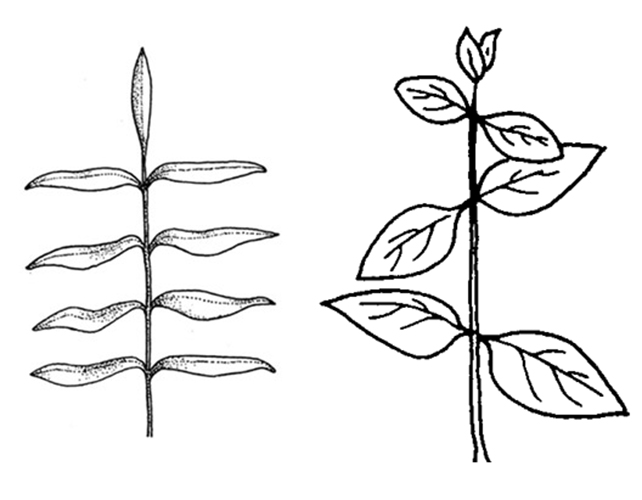 , decussatedecussate:
, decussatedecussate:
(adj) arranged along stem in pairs, with each pair at right angles to the pairs above and below
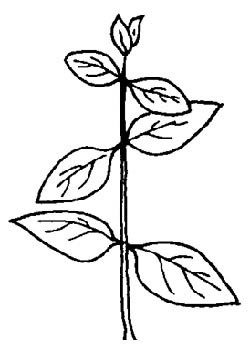 , sessilesessile:
, sessilesessile:
(adj) attached directly, without a stalk
 or petiolatepetiolate:
or petiolatepetiolate:
(adj) relating to or in the form of a petiole; bearing petioles
 ; leaf bladeblade:
; leaf bladeblade:
(n) (syn. lamina) the flat, expanded part of a leaf, frond, or petal (excluding, e.g., the petiole)
 entireentire:
entireentire:
(adj) having a continuous margin that is not toothed or lobed
 to dissecteddissected:
to dissecteddissected:
(adj) (of leaves) +/- deeply divided, cut, or lobed, including being compound
 to various degrees, lanceolatelanceolate:
to various degrees, lanceolatelanceolate:
(adj) lance-shaped; widest point below the middle, tapering to the apex
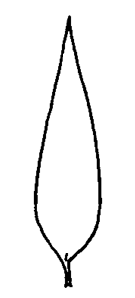 to ovateovate:
to ovateovate:
(adj) egg-shaped in outline; generally with the broad end at or near the base
 ; marginmargin:
; marginmargin:
(n) edge; rim
 sometimes serrateserrate:
sometimes serrateserrate:
(adj) (of a leaf margin) bearing sharp teeth pointing forward or to the apex
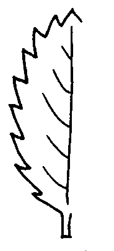 , sometimes highly heterophyllousheterophyllous:
, sometimes highly heterophyllousheterophyllous:
(adj) with dissimilar leaves on the same plant; often occurs on plants with both submersed and emersed leaves
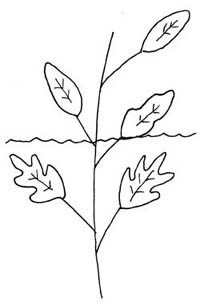 between submersedsubmersed:
between submersedsubmersed:
see submerged
 and emergentemergent:
and emergentemergent:
(adj) (syn. emersed) with parts raised out of the water; extending up out of the water
 forms. Inflorescenceinflorescence:
forms. Inflorescenceinflorescence:
(n) the arrangement of flowers on the floral axis
 solitary to racemoseracemose:
solitary to racemoseracemose:
(adj) (1) bearing racemes; in the form of a raceme; (2) raceme-like
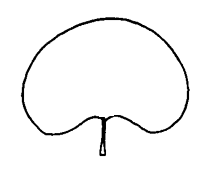 , axillaryaxillary:
, axillaryaxillary:
(adj) in, of, or produced from an axil
 . Flowers sessilesessile:
. Flowers sessilesessile:
(adj) attached directly, without a stalk
 or pedicellatepedicellate:
or pedicellatepedicellate:
(adj) borne on a pedicel
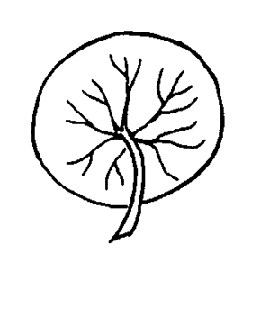 ; sepals 5, fused or distinct; corollacorolla:
; sepals 5, fused or distinct; corollacorolla:
(n) the inner whorl(s) of the perianth; all the petals of a flower
 5-lobed, lobes equal or 2-lipped, with adaxialadaxial:
5-lobed, lobes equal or 2-lipped, with adaxialadaxial:
(adj) pertaining to the side facing toward the axis, as in the upper surface of a leaf
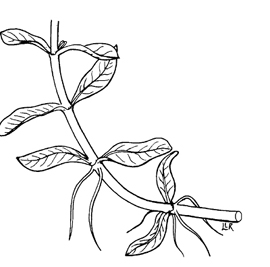 lip 2-lobed, abaxialabaxial:
lip 2-lobed, abaxialabaxial:
(adj) the side facing away from the axis, as in the underside of a leaf
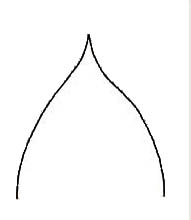 lip 3-lobed, white to yellow, purple. Dispersal by stem fragments, rooting from individual leaves, or seeds.
lip 3-lobed, white to yellow, purple. Dispersal by stem fragments, rooting from individual leaves, or seeds.
rivers, lakes, and wetlands
A large polymorphicpolymorphic:
(adj) displaying multiple forms (of, e.g., an organ) in one organism
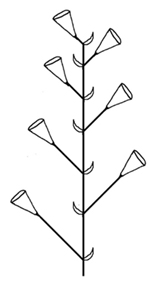 genus with several species cultivated for aquaria and ponds. Some species have several cultivated varieties produced.
genus with several species cultivated for aquaria and ponds. Some species have several cultivated varieties produced.